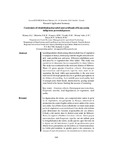Constraints of rehabilitating degraded semi-arid lands of Kenya using indigenous perennial grasses
| dc.contributor.author | Nyariki, Dickson M. | |
| dc.contributor.author | Mganga, K.Z. | |
| dc.contributor.author | Musimba, N.K.R. | |
| dc.contributor.author | Nyangito, M.M. | |
| dc.contributor.author | Mwang’ombe, A.W. | |
| dc.contributor.author | Ekaya, W.N. | |
| dc.contributor.author | Muiru, W.M. | |
| dc.date.accessioned | 2017-02-25T06:36:58Z | |
| dc.date.available | 2017-02-25T06:36:58Z | |
| dc.date.issued | 2010 | |
| dc.identifier.uri | http://hdl.handle.net/123456789/183 | |
| dc.identifier.uri | http://erepository.uonbi.ac.ke/handle/11295/85481 | |
| dc.identifier.uri | https://www.researchgate.net/publication/327437717_Constraints_of_rehabilitating_degraded_semi-arid_lands_of_Kenya_using_indigenous_perennial_grasses | |
| dc.description.abstract | Land degradation which among others include loss of vegetation is rampant in Kenya, destroying both the fragile arid and semiarid lands and the non-arid areas. Efforts to rehabilitate semiarid areas by re-vegetation has often failed. This study was carried out to determine factors responsible for these failures. The study was conducted in the semi-arid district of Kibwezi. Three (3) grass species Cenchrus ciliaris, Enteropogon macrostachyus and Eragrostis superba were used for revegetating the land, while agro-pastoralists in the area were interviewed through questionnaires to get their perceptions on the failures of reseeding. Low rainfall, poor seed quality, lack of enough seed, flush floods, destruction by grazing animals were found to be factors limiting the success of reseeding. | en_US |
| dc.language.iso | en | en_US |
| dc.subject | land degredation | en_US |
| dc.title | Constraints of rehabilitating degraded semi-arid lands of Kenya using indigenous perennial grasses | en_US |
| dc.type | Article | en_US |
Files in this item
This item appears in the following Collection(s)
-
Journal Articles (BE) [405]

